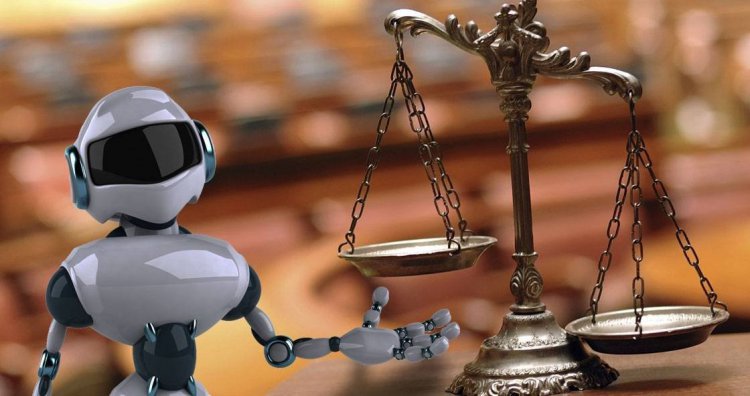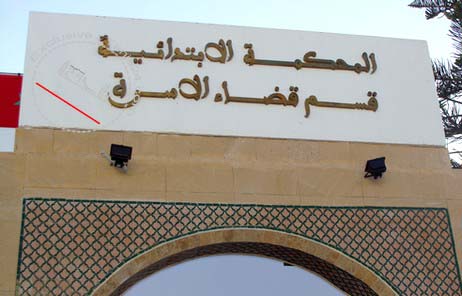AN OVERVIEW OF ARTIFICIAL INTELLIGENCE
Gyanendra Singh 1 Ajitanshu Mishra2 Dheeraj Sagar3 1,2,3Assistant Professor, Mechanical Engineering Department, Invertis University Bareilly - SBIT JOURNAL OF SCIENCES AND TECHNOLOGY ISSN 2277-8764 VOL-2, ISSUE 1, 2013.

SBIT JOURNAL OF SCIENCES AND TECHNOLOGY ISSN 2277-8764 VOL-2, ISSUE 1, 2013.
AN OVERVIEW OF ARTIFICIAL INTELLIGENCE
Gyanendra Singh 1 Ajitanshu Mishra2 Dheeraj Sagar3
1,2,3Assistant Professor, Mechanical Engineering Department,
Invertis University Bareilly
E-mail:gyanendra.rkgit@gmail.com
Abstract: The recent growth in computer architecture has changed the face of science and engineering. This growth is so fundamental that it is dramatically reshaping relationships among people and organizations and providing a foundation for understanding and learning of intelligent behavior in living and engineered systems. Is this growth beneficial to our society and how the medical facilities, police departments, and manufacturing plants have all been changed by this, are such questions of the general public which are due to the lack of education concerning rapidly advancing technologies.
This paper attempts to present an overview of Artificial Intelligence (AI). A generally accepted theory that “machine will do and think like humans more in the future” is the concept behind AI. Brief literature of different aspects by which AI is achieved like expert system, knowledge based systems (knowledge engineering), neural networks, fuzzy logic, neuro fuzzy logic and fuzzy expert system, is included in order to have a clear understanding of AI. Along with the different applications of AI, application of expert system to solve the design problem of mechanical spring is also included in this paper.
It is concluded that extensive ongoing research in the field of AI gives an idea that in near future a day will come when human beings and machines will merge into cyborgs or cybernetic organisms that are more capable and powerful than either. This idea is called transhumanism
Key words: Artificial Intelligence, Expert System, Neural Network, Fuzzy Logic
- INTRODUCTION
Artificial Intelligence term was coined by John McCarthy in 1956. He defined it as "the science and engineering of making intelligent machines.” AI is the branch of computer science which deals with the study and design of intelligent agents that perceives its environment and takes actions which maximize its chances of success. AI may be defined as: “The ability to hold two different ideas in mind at the same time and still remain the ability to fucntion”. But AI must include the learning from past experience, reasoning for the decision making, inference power and quick response. Also it must be able to take decisions on the basis of priorities and tackle complexity and ambiguity. Machines programmed to carry out tasks, when carried out by humans would require intelligence, are said to possess artificial intelligence. AI's scientific goal is to understand intelligence by building computer programs that exhibit intelligent behavior by using symbolic inference, or reasoning inide the machine. AI definition is not time-independent. It gives the judgment of any system by keeping time in mind.
- FEATURES OF AI PROGRAMMING
According to Brook ordinary programming languages don’t have the abilities to deal with qualitative information. So, the AI machines, are programmed to work with their own developed programming language to manipulate knowledge more effectively. AI programs are different from ordinary programming languages. They are written to manipulate predominantly qualitative rather than numeric information. They use declarative knowledge,
i.e. assertions whose truth-value is independent of the algorithmic context. They can induce, deduct and sometimes guess data. They can reconsider decisions by employing back tracking for solutions.
- COMPONENTS OF AI
AI has four main components
- Expert systems:
- Heuristic problem solving
- Natural Language Processing
- Vision
Expert system handles the situation as an expert and gives performance. Heuristic problem solving is meant to evaluate small range of solutions, may involve some guesswork to find near optimal solution. Natural language processing provides communication between human and machine in natural language. Vision is the ability to recognize shapes and features etc. automatically.
- EXPERT SYSTEM
An expert system is a machine system in which useful human knowledge is added in machine memory in order to give intelligent advice and offer explanations and justifications of its decisions or demand. Expert systems relies on a large database of well defined specialized knowledge about a particular area. Construction of such programs is refered to as Knowledge Engineering. All such AI programs that achieve expert-level competence in solving problems in task areas by using knowledge about specific tasks are called knowledge-based Systems or expert systems. These programs contains the knowledge used by
human experts, in contrast to knowledge gathered from textbooks. Because of this expert systems are like human experts e.g. doctors, engineers, analysts, teachers, geologists etc which encapsulate the skills of an expert and to dispense advice to less knowledgeable users. This transfer of knowledge depends upon the task and will take place gradually through many interactions between expert and the system.
It is easier to build expert system than ones with common sense. They represent task domain. Task means some goal-oriented, problem-solving activity and domain refers to the area within which the task is being performed. One of the earliest expert system MACSYMA which performed a variety of symbolic mathematical tasks, was composed of a set of fairly unstructured LISP functions. There are many expert systems exists which have been designed for giving expertise training, designing and trouble-shooting etc. like MYCIN, TURNX, PROSPECTOR. The expert systems are still in their infancy.
4.1 Benefits of Expert Systems
Following are the benefits of expert system
- Expert systems have proved to do a better job than humans. They make fewer mistakes and more consistent in their recommendations.
- Artificial Expertise is usually cheaper compared to human expertise.
- They achieved a notable success in the field of training, to train non-experts and even to improve expertise of expert.
- They can handle the mechanical type of repetitive tasks of experts, so that experts can well concentrate on their unique skills in given domain.
- They are compatible with many manager’s decision styles.
- They can enable operations in environment not suitable for humans.
- They improve the productivity of industry.
4.2 Expert System Applied to Design of Spring
An expert systems are able to make flexible programs by using qualitative and quantitative data to solve a wide range of design problems. An expert system can be used to design the spring. It requires minimum input from user like one load and length of spring. Any additional information like second load at different length of spring rate, spring inner diameter and outer diameter limits can also be specified if required because this additional information reduces the guesswork of expert system. Knowledge Base, Rule Base and Data Base are used by the user while designing the spring.
- The Knowledge Base consists of following two equations:
K= Gd4/ (8D3N) and T= 8Ks FD/ (πd3),
Here F represents load on the spring, T represents shear stress, K s represents shear stress concentration factor, D represents mean coil data, D represents wire diameter, G represents shear modulus and N represents number of active coils.
2
- Rule Base consists of constraints like length, size limits on outer diameter, inner diameter, cost of material, etc which are provided by user. Inference engine is used to test the design under these constraints.
- Data Base database consists of around 700 compression designs. When the design completes, the inference engine compares this design with these standard compression designs to find the optimal solution. The results are reported to user.
- User Interface is there throughout the designing process. The expert system asks the user for any additional input like any space limitations, any material specification, any load requirements, any solid height limitations etc.
After the completion of process by expert system final selection is left to the user on the basis of its application.
- FUZZY LOGIC
It was introduced by Dr. Lotfi Zadeh of UC/Berkeley known as father of fuzzy set theory, in the 1960's as a means to model the uncertainty of natural language. Lofti A.Zadeh. Fuzzy Logic are used as a profitable tool to control the subway systems,
complex industrial processes, entertainment electronics, diagnosis systems and household appliances e.g. in washing machines fuzzy logic sense load size and detergent concentration and adjust their wash cycles automatically. Fuzzy logic is very useful in manufacturing processes as it can handle situations that can not be adequately handled by traditional true/false logic. Fuzzy Logic was invented in the United States and rapid growth of this technology has started from Japan.
Fuzzy logic is a mathematical approach to problem solving. It is very powerful method of reasoning when there is no simple mathematical model and input data are imprecise for very complex processes and highly nonlinear processes. It produces exact results from imprecise data, and is especially useful in computers and electronic applications. Fuzzy logic differs from classical logic in that statements are no longer true or false, on or off. In traditional logic an object takes on a value of either zero or one but in fuzzy logic, an object can assume any real value between 0 and 1. The human brain can reason with uncertainties and judgments. Computers can only manipulate precise valuations. Fuzzy logic is an attempt to combine the two techniques." Fuzzy logic performs better when compared to conventional control mechanism like PID.
According to Nagrath and Gopal Fuzzy Logic is only a small part of the logics available to AI. Fuzzy Logic is basically a multivalued logic derived from fuzzy set theory to deal with reasoning that is approximate rather than precise. Intermediate values between conventional evaluations like yes/no, true/false, black/white, etc. can be formulated mathematically and processed by computers. In this
way an attempt is made to apply a more human-like way of thinking in the programming of computers.
5.1 Fuzzy Expert System
A fuzzy expert system uses fuzzy logic instead of Boolean logic. In other words, a fuzzy expert system is a collection of membership functions and rules that are used to reason about data. Fuzzy expert systems are oriented toward numerical processing whereas conventional expert systems are mainly symbolic reasoning engines. The rules in a fuzzy expert system are usually of a form similar to the following:
if x is low and y is high then z = medium
where x and y are input variables (names for know data values), z is an output variable (a name for a data value to be computed), low is a membership function (fuzzy subset) defined on x, high is a membership function defined on y, and medium is a membership function defined on z. The part of the rule between the "if" and "then" is the rule's _premise_ or _antecedent_. The part of the rule following the "then" is the rule's _conclusion_ or _consequent_. This part of the rule assigns a membership function to each of one or more output variables. Fuzzy expert systems can have more than one conclusion per rule and can also have more than one rule. The group of rules is collectively known as knowledge base. In a fuzzy expert system, the inference process is a combination of four subprocesses: fuzzification, inference, composition, and defuzzification. The defuzzification subprocess is optional. In fuzzification subprocess, the membership functions defined on the input variables are applied to their actual values, to determine the degree of truth for each rule premise. In the inference subprocess, the truth value for the premise of each rule is computed, and applied to the conclusion part of each rule. This results in one fuzzy subset to be assigned to each output variable for each rule. In the composition sub process, all of the fuzzy subsets assigned to each output variable are combined together to form a single fuzzy subset for each output variable. In defuzzification subprocess fuzzy value is converted to a single number crisp value.
5.2 Neuro-fuzzy Logic
They use combination of fuzzy logic and neural networks. Fuzzy logic uses approximate human reasoning in knowledge-based systems while the neural networks aim at pattern recognition, optimization and decision making. According to Arbib the explicit knowledge representation of fuzzy logic is augmented by the learning power of simulated neural networks. This combination of two technological innovations delivers the best results and has led to a new science called neuro-fuzzy logic.
- ARTIFICIAL NEURAL NETWORKS (ANN)
The concept of a neural network appears to have first been proposed by Alan Turing in his 1948 paper "Intelligent Machinery". Artificial neurons were
3
first proposed in 1943 by Warren Mc Culloch, a neurophysiologist, and Walter Pitts, an MIT logician.
Computers can be operated in nanoseconds, and work without error. But it can’t do walking, talking and reasoning like human being. ANN are an attempt to emulate (very roughly) the basic functions of the human brain to perform complex functions that everyday computer systems are incapable of doing. The human brain is a naturally occurring model of Neural network. So, idea is to simulate functioning of the brain directly on a computer and thus develop artificial neurons. Neural Networks are not meant to duplicate the human brain, but to receive information about how the brain works.
An ANN involves a network of simple processing elements (artificial neurons) which can exhibit complex global behavior, determined by the connections between the processing elements and element parameters whereas
Biological neural networks are made up of real biological neurons that are connected or functionally related in the peripheral nervous system or the central nervous system.
In a neural network model a large number of very simple neurons like nodes of processing elements are connected together with a large number of weighted connections between these elements which are highly parallel and distributed. Neurons are extremely slow, operate in milliseconds and yet humans can perform extremely complex tasks in just a tenth of a second because brain contains a huge number of processing elements that act in parallel. According to Brook ANN are used to solve artificial intelligence problems by using algorithms designed to alter the strength of the connections in the network to produce a desired signal flow.
ANN can recognize something it has never seen before and predict the future, by extracting patterns in the past. Application areas of ANN also include the system identification and control (vehicle control, process control), function approximation or regrassion analysis, time series prediction, modeling game-playing, sequential decision making (chess, racing), pattern recognition (radar systems, face identification, object recognition, etc.), sequence recognition (gesture, speech, handwritten text recognition), medical diagnosis, financial applications, data processing (including filtering, clustering), knowledge discovery in databases (KDD), visualization and e-mail spam filtering.
- APPLICATION OF AI
- To design and analyze the mechanical elements on basis of size limitations.
- To diagnose electronics locomotion systems.
- Can beused in electronics and electrochemical systems.
- To diagnose the software development process.
- To identify chemical compound structures and chemical compounds.
- Can be used in medical diagnosis.
- To plan experiments in biology, chemistry and molecular genetics.
- To make stock and bond portfolio for selection and management.
- Trouble shooting systems
- To plan and explore the space.
- To forecast crop damage
- To develop completely automated plants and industries.
- CONCLUSION
Till now AI has not such a great effect directly on common people life and is limited to some areas like military, space, industry, medical, neutral networks and geological.
It may be expected that at the end of 2035 with the extensive research and advancement in the field of AI, we will be able to move away from today’s machinery that necessarily come with weighty manuals regarding machine languages and develop the machinery which will be able to understand human completely. We will have robot as doctor in hospitals, professor in class room, driver in bus. According to
Bostrom that will be the era of transhumanism where human beings and machines will merge into cyborgs or cybernetic organisms that are more capable and powerful than either.
- REFERENCES
Arbib, Michael A. (Ed.) (1995), “The Handbook of Brain Theory and Neural Networks”, p. 666
Bostrom, Nick (2005) "A history of transhumanist thought" , Journal of Evolution and Technology, p. 2-21
Brook R.A. “Intelligence without representation-Artificial Intelligence” 1991,p.139-159
Nagrath I.D. and Gopal M. “Control Systems Engineering” New Age International Publications.
PC "Fuzzy Logic and Neural Networks - Practical Tools for Process Management", May/June, 1994, p.17
Surinder Kumar and Jha A.K. “CAD/CAM”
What's Your Reaction?




















